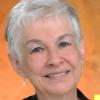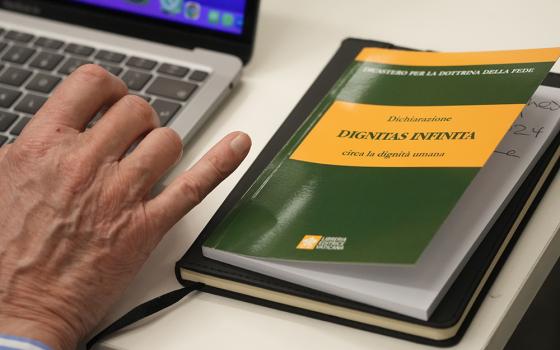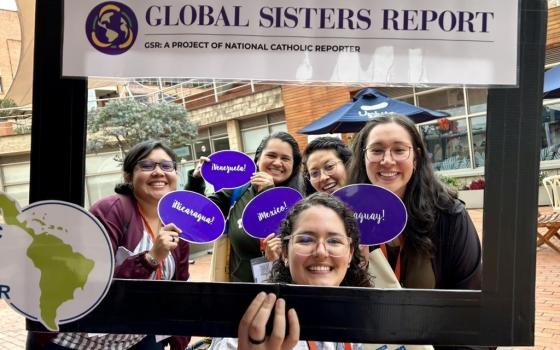 THE TASTE OF SILENCE: HOW I CAME TO BE AT HOME WITH MYSELF
THE TASTE OF SILENCE: HOW I CAME TO BE AT HOME WITH MYSELF
By Bieke Vandekerckhove
Published by Liturgical Press, $17.95
At the age of 19, Bieke Vandekerckhove was diagnosed with amyotrophic lateral sclerosis (ALS). Learning that the progressive neurodegenerative disease would end with her death in two to five years, Vandekerckhove tried to make peace with herself and her God.
That's the territory of her insightful and absorbing memoir, The Taste of Silence, which won the 2011 Best Spiritual Book award in Belgium. Recently published by Liturgical Press, this edition was translated into English from the Dutch by Rudolf Van Puymbroeck as a help for his daughter, who suffers from multiple sclerosis.
Instead of seeking a cure for her illness, Vandekerckhove tried to make sense of it, which she recounts in this book's 27 chapters. Written poetically, the chapters -- some only a page and a half -- evoke the connectedness that Vandekerckhove felt toward the divine.
Her illness, she says, "forced me into 'no-action' and many hours of silence. Nothing was more difficult. But I discovered that there is nothing more dynamic. Everything that happens in that silence is what this book is about."
The book also makes reference to concepts from the works of major spiritual writers. As the title, with its rhetorical device of synesthesia, suggests, the text is immersed in paradox, as in "Go stand where there is no place to stand," from Zen master Shinichi Hisamatsu. Vandekerckhove says she was flung into that place by her illness.
Three years after her original diagnosis, Vandekerckhove learned that her disease had inexplicably stabilized. She would be partially paralyzed for the rest of her life, but her death was not imminent.
A Christian, she sought out spiritual help from a Benedictine abbey and a Trappist monastery, where she prayed and sang the psalms. She was impressed to learn about the fundamental inward character of Christianity as opposed to the "ossification of abstract ideas" with which it is often associated.
She also saw the value of silence as a way to connect to herself. All she had to do was rid herself of surrounding distractions, sit quietly, wait and listen.
Vandekerckhove spent the next 20 or so years trying to understand the meaning of life -- not just her own life but life itself. This includes the concept of God and whether there is a God and what God's presence or absence suggests about human beings and their place in a sentient universe.
Before her illness, she had seen faith as a collection of "notions that did not begin to make sense." Afterward, she saw God as "a toppling over into [her own] inwardness."
On Sept. 7, Vandekerckhove died at the age of 46. Let us hope that in meeting her own "inwardness," she also found the presence that she had been seeking.
 I LEFT IT ON THE MOUNTAIN: A MEMOIR
I LEFT IT ON THE MOUNTAIN: A MEMOIR
By Kevin Sessums
Published by St. Martin's Press, $25.99
After learning that he was HIV positive, Kevin Sessums took two pilgrimages -- the first to Mount Kilimanjaro in Africa and the second to El Camino in Spain. In both places, he thought he experienced supernatural manifestations.
Whether those manifestations were of supernatural origin is hard to determine. Sessums had trouble focusing on his surroundings because he made his pilgrimages wearing earbuds and listening to music. He was also addicted to drugs and he tended to read supernatural connections into events that weren't necessarily supernatural. When he saw stones arranged to form the word "MAMA," for example, he thought the Camino was sending him a message.
Arranged thematically, his disturbing memoir focuses mainly on Sessums' life as a writer, a gay man and a drug addict. It also offers a cautionary tale about promiscuous sex and drug use, which Sessums describes in difficult detail.
Besides having an eye for telling details, Sessums has a flare for metaphor and poetry. He quotes frequently from poems of John Keats and Emily Dickinson and even had lines from their work tattooed on his arms, although he was disappointed when he eventually realized that the quotes were incorrect.
By that time, Sessums had made too many bad decisions regarding his relationships and had been on too many bad drug trips, including one that got him evicted from a friend's home. Homeless and impoverished, Sessums tried to decipher the visions he had after injecting himself with crystal meth.
As the book winds down, he realized that he had to free himself from drugs. With help from friends -- including deceased friends whose spirits, Sessums believed, watched over him -- and his two dogs, he finally got clean.
Before drugs took control of Sessums' life, he had been a highly regarded writer of celebrity profiles for Vanity Fair, Interview and Parade. Sessums reported on the luxurious trappings in the residences of his subjects. Although his style seems overwritten, he is generally able to hold his narrative together not because of the luster of his movie star subjects but because of the nature of his own fall from grace and search for redemption.
 ALL THE WRONG PLACES: A LIFE LOST AND FOUND
ALL THE WRONG PLACES: A LIFE LOST AND FOUND
By Philip Connors
Published by W.W. Norton, $25.95
One year apart, Philip Connors and his younger brother, Dan, had been raised Roman Catholic, but neither practiced the religion. Connors resembled his mom while Dan looked more like his dad. Connors was the reader and the intellectual, while Dan liked to work with his hands.
Yet the brothers had good times, especially when they reminisced over their boyhood adventures. Connors' latest memoir, All the Wrong Places, opens with a scene from one of those happy times, as 20-year-old Dan took Connors aloft in a hot air balloon. The two drifted over the rugged terrain of New Mexico while Connors, looking down 2,000 feet below, felt a sense of euphoria. He knew the moment would last forever.
When Connors was back in college studying print journalism, he learned that Dan had killed himself. Now -- some 16 years later -- Connors is still trying to understand Dan's suicide.
Connors' memoir covers his 20s and 30s as it tries to blend the stories of his professional and private life. It makes for an insightful read, although it doesn't pack the power of his earlier award-winning memoir, Fire Season.
Connors graduated from the University of Montana and landed a job as a reporter for The Wall Street Journal, from whose vantage point he witnessed the burning of the Twin Towers on 9/11. He fell in and out of love, was mugged, wrote and edited feature stories, and read Frederick Seidel, whose dark poems seemed to speak to Connors' soul.
He also read everything he could about suicide, including graphic police reports relating to his brother's death. Ultimately, he realized that friends and family members had all shared his feelings of guilt and had, like him, failed to understand Dan's motives.
But Connors also learned to live with his loss. He didn't learn it in New York or at the desk of a prestigious newspaper. He learned it in a fire tower high above the mountains of New Mexico, where he took a job as a fire ranger.
Here, he writes (in gorgeous prose), he "hovered in numinous mysteries," and "in the manic profusion of starlight, the blinding glare of noon," he lost himself. He found himself in the same desert wilderness that he first saw with his brother many years earlier. He was back where he started. In a sense, he had never left.
[Diane Scharper teaches memoir writing at Towson University. She is a frequent contributor to NCR.]








